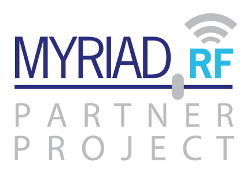UmTRX
What is the mapping between software channels and PCB labels?
UmTRX has two LMS6002D FPRF chips:
- Channel 1 (UHD daughterboard/slot A) → RX1, TX1, SCN1 labels on PCB
- Channel 2 (UHD daughterboard/slot B) → RX2, TX2, SCN2 labels on PCB
Each chip has RX1, RX2 and RX3 inputs, and TX1 and TX2 outputs (“antennas” in software). The mapping is as follows:
- RX1 (software) = RXn (PCB label)
- RX2 (software) = not connected on the PCB
- RX3 (software) = SCNn (PCB label)
- TX1 (software) = not connected on the PCB
- TX2 (software) = TXn (PCB label)
Is support available?
UmTRX is an open source project and community support is available via the mailing list.
Commercial support is available from Fairwaves.
Applications
Mobile base stations
Can the SIM cards of other operators be used?
OpenBTS and OsmoBTS can be configured to work with any SIM cards. However, it’s impossible to provide subscriber authentication and traffic encryption where you don’t know the Ki secret key for a SIM card.
If you operate a normal mobile network with encryption and subscriber authentication, you should have SIM cards with known Ki keys, and typically this means purchasing SIM cards.
Is there a solution for broadband data, e.g. 3G or 4G?
We believe 3G is a dead end and that the future will belong to 2G+4G+Wi-Fi networks.
Fairwaves offer a Wi-Fi hot-spot as a separate module and are also able to supply licences for proprietary LTE eNodeB software which can be used to provide 4G services.


